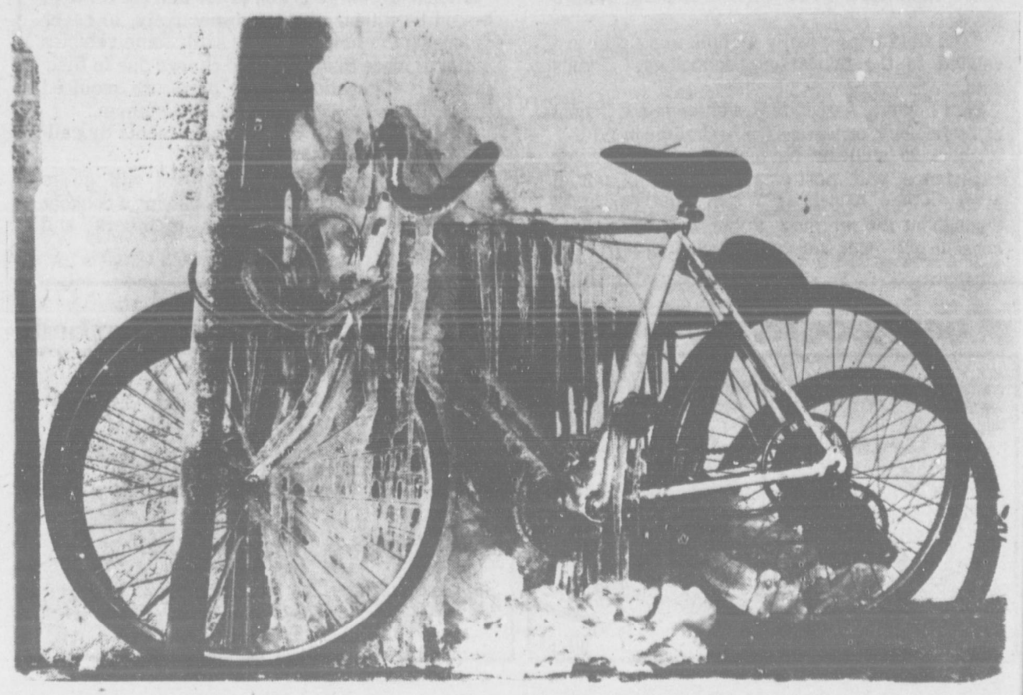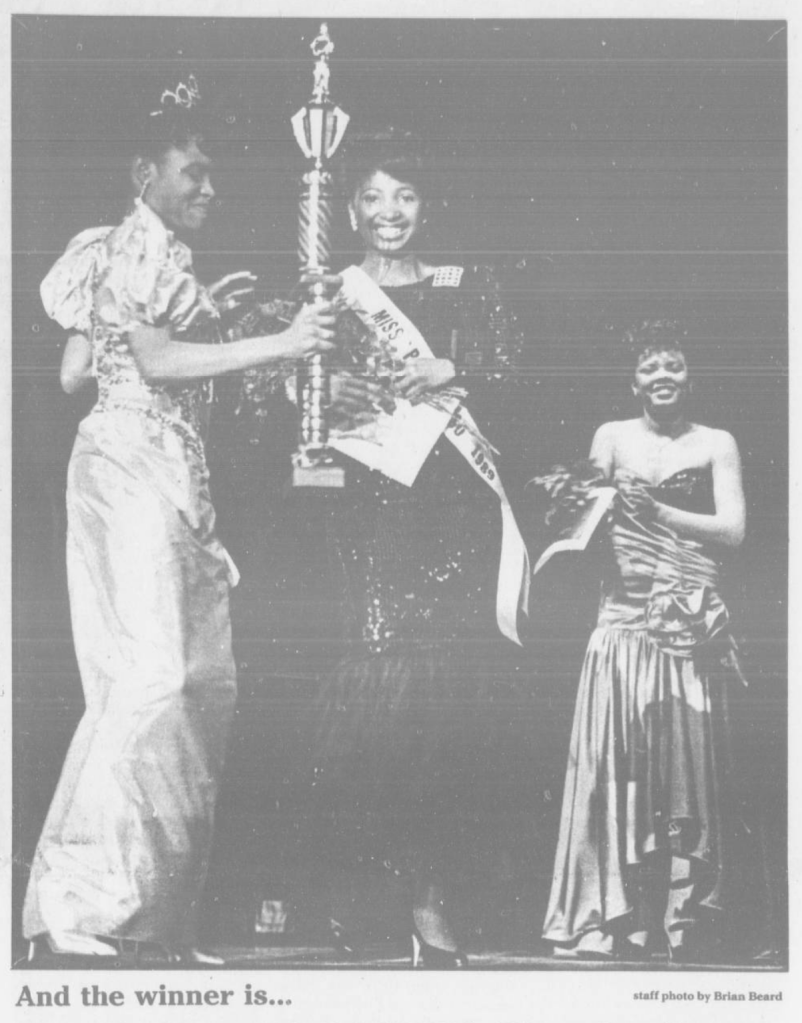In Fall 2020, students led by Associate Professor Louise Siddons created a digital project documenting the art exhibition history of Oklahoma State University, with the assistance of Digital Scholarship Librarian Megan Macken. Students used the digitized archive of the student newspaper, the Daily O’Collegian—today the O’Colly— to construct a database of exhibitions held between 1960 and 1999.
Here on the collection blog, we’re featuring reflective essays written by students about their work on this project, based on the research they did to compile the online exhibition history. This week’s essay is by Lainey Gerber. It has been edited for length and clarity.
Between 1985 and 1989, art exhibitions at Oklahoma State University and surrounding Stillwater, Oklahoma, brought a lot of different art styles and subjects to local audiences.
Exhibitions featured in the O’Colly from 1985-1989 display a variety of contemporary art characteristics. Paintings were prominent through all the showcases. This is likely due to the medium being popular in contemporary culture. However, another big part of contemporary culture is variety, which was displayed through the sculptures, quilts and photographs also being shown.
The Native American art on display was not tied to a specific medium: it included a paintings, drawings, jewelry and other hand-made artifacts, such as knives and baskets. Some O’Colly articles did not disclose which tribes were featured in the exhibitions. Of those that did, it was common they were Oklahoma-based tribes, such as the Cherokee and Osage. Native American art exhibitions were often organized by faculty in the Gardiner Art Gallery, and were supported by organizations such as the National Endowment for the Arts.
In November 1989, the Gardiner Art Gallery organized and hosted a Native American quilts exhibition. November is National Native American Heritage Month, although the O’Colly did not include that information in its reporting on the show. Oklahoma is largely Native territory, and Native American history runs deep through Oklahoma. OSU has hosted Native American exhibitions throughout the year because of this. This exhibition featured quilts that are dynamically decorative enough to be hung on a wall and be appreciated for their design and detail.
The O’Colly included detail about some of the quilts included, such as “Lone Star” made by Minnie Roberts Mitchell in 1920. Mitchell’s quilt “was made from cotton she picked and carded. Mitchell then dyed the fabric with bark and berries.”
Student art exhibitions during this time consisted mostly of paintings, drawings and photography. This could be due to the fact that a majority of these exhibitions were put on by the class itself, such as the Photography II class holding Images: Exposed at the Old Central Museum of Higher Education in 1986.

In November of 1989, OSU hosted an African American art exhibition during Black Awareness Week. Black artists from across Oklahoma and the rest of the United States displayed their work “from the African-American perspective,” said Deborah Buchanan, director of minority graduate participation for the OSU College of Arts and Sciences. The exhibition, organized by Langston University and the OSU College of Arts and Sciences, featured paintings and sculptures. It was put on for students to have the opportunity “to view the work of Oklahoma artists who are informing all publics of Black Awareness Week through the African-American art exhibit,” said Buchanan.
“[African-American art] is the way some of the artists combine Africanism with their lives,” said Edward Grady, an artist and research assistant at Langston University. Grady also said the artists featured are “ancestrally connected with Africa.”
This exhibition responded meaningfully to the events held during Black Awareness Week and Black History Month that OSU hosts. During this time of the year, OSU hosts the Mr. and Miss Black OSU competition, where many of the contestants use their platform to bring awareness.

Throughout the late 1980s, O’Colly articles did not offer critical commentary. All were strictly informative, but some did dive deeper into the exhibitions and their artists or organizers by interviewing them. Interviews usually included how judging processes worked, why the exhibit was put on, or credible information about the art or artist.
From the perspective of American art history, details about the artists’ backgrounds and their art’s mediums are missing. Most of the O’Colly articles hit the “who,” “what,” “when” and “where” aspects, but not the “why” or “how.” Art is history told through the artist’s perspective, so having background knowledge on them would help the reader of the article understand the art and exhibitions better.
Want to learn more? Our last post also looked at some of these exhibitions.
